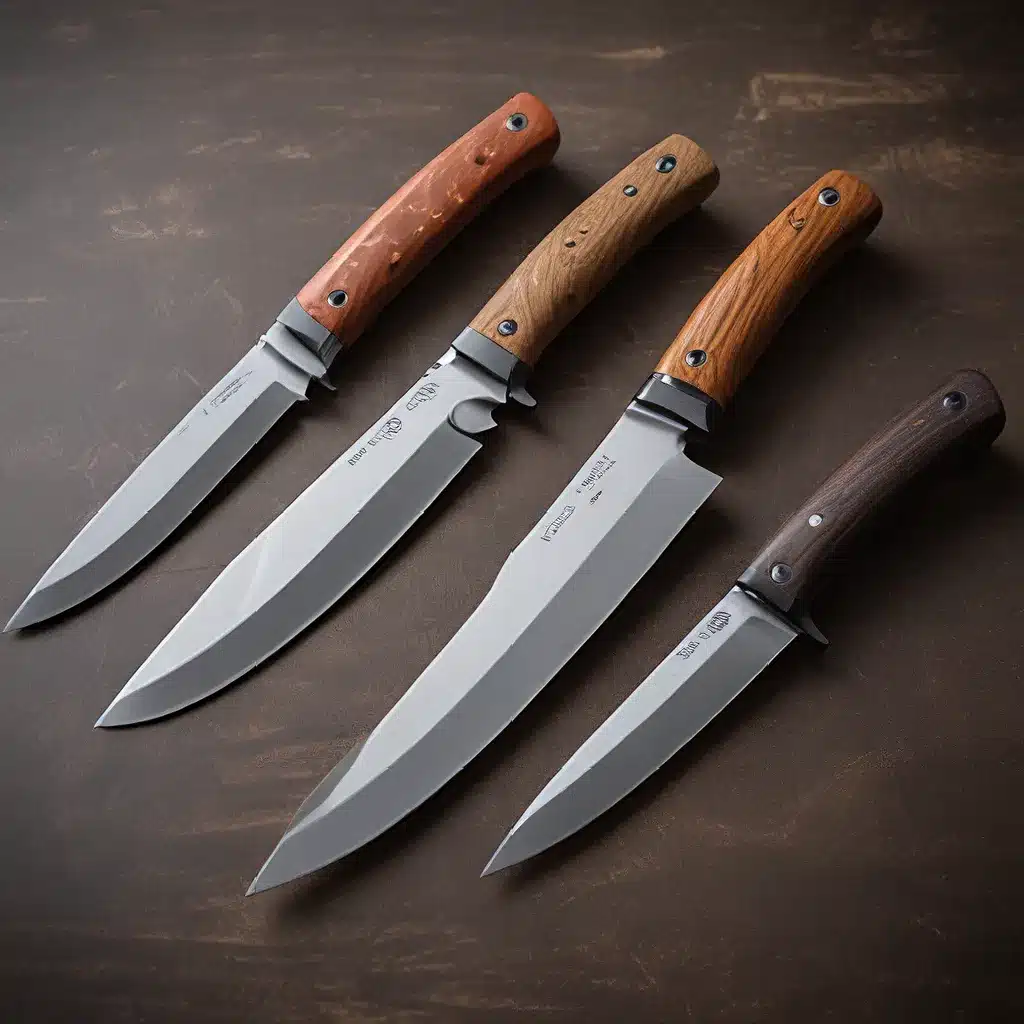
As a self-proclaimed knife enthusiast, I’m often asked by friends and family to help them navigate the overwhelming world of blades. From the humble utility knife to the precision-crafted scalpel, the sheer variety of options can be dizzying. But fear not, my fellow blade aficionados – I’m here to shed some light on the different knife styles and their respective applications, so you can make an informed decision when it’s time to add a new addition to your collection.
Utility Knives and Their Versatile Blades
Let’s start with the workhorse of the knife world – the utility knife. These handy tools are found in countless workshops, job sites, and households, and for good reason. Utility knives come equipped with a variety of blade styles, each designed to tackle specific tasks with ease.
The trapezoid or all-round blade is perhaps the most ubiquitous of the bunch. With its short, straight cutting edge and trapezoid shape, this versatile blade can handle a wide range of materials, from drywall and flooring to cardboard and paper. Utility trapezoid blades are a go-to choice for floor and roof installers, builders, construction workers, and warehouse staff, to name a few.
But what if you’re faced with tougher, thicker materials? Enter the hook blade. Recognizable by its distinctive hooked shape, this cutting tool is a favorite among contractors, flooring installers, and roofers who need to slice through carpets, linoleum, and roofing shingles without damaging the underlying surfaces. The hook design allows for a clean, controlled cut, making it an invaluable asset for professionals and DIYers alike.
For those who work with flexible or soft materials, the concave blade might be the perfect fit. This curved, semicircular blade excels at cutting through carpets, linoleum, and other flooring materials, as well as acrylic panels, LVP, vinyl, and rubber. The concave shape allows for precision cuts around pipes and tricky corners, making it a favorite among floor and roof layers.
Snap-Off Blades: Precision and Convenience
While utility knives with interchangeable blades are incredibly handy, there’s another category of cutting tools that deserves attention: the snap-off knife. These ingenious devices feature blades that break off in small segments, allowing you to always have a fresh, sharp edge at your fingertips.
The 9mm snap-off blade is perfect for cutting thin materials like paper, cardboard, wallpaper, and even leather and vinyl. Its small size makes it ideal for tasks that require precision, such as crafting and hobbies. On the other hand, the 18mm snap-off blade is better suited for tackling thicker materials like corrugated board, flooring, and plasterboard.
One of the key advantages of snap-off blades is their ability to minimize waste and maximize efficiency. By using only the necessary segment of the blade, you can ensure a clean, consistent cut while prolonging the life of your cutting tool. And with a wide range of manufacturers like Sollex, Olfa, and Stanley offering snap-off blades, you’re sure to find the perfect fit for your needs.
Specialty Blades: From Medical Scalpels to Industrial Cutters
While utility knives and snap-off blades cover a wide range of applications, there are times when a more specialized cutting tool is required. That’s where specialty blades come into play.
One such example is the medical scalpel. Designed for precision and delicacy, these blades are the go-to choice for surgeons, artists, and model makers who require clean, detailed cuts. But it’s important to note that medical scalpels may not be the most suitable option for industrial or heavy-duty tasks, as they are often not as durable or robust as their utility counterparts.
Another specialized blade type is the long blade, which is particularly well-suited for cutting thicker materials such as mineral wool or other insulating materials. Unlike standard utility blades, long blades can extend further from the knife handle, allowing for deeper, more effective cuts. Some long blades even feature a serrated or toothed edge to tackle the most stubborn materials.
And let’s not forget the safety knife, a unique cutting tool designed with workplace safety in mind. These knives, paired with their corresponding safety blades, are a common sight in delivery, logistics, and warehouse environments, where they are used for tasks like opening packages, cutting strapping material, and disposing of shrink wrap.
Choosing the Right Blade for the Job
With so many blade styles and applications to consider, it can be overwhelming to decide which knife is the best fit for your needs. But fear not, my fellow blade enthusiasts – here are a few tips to guide you in the right direction:
-
Assess the task at hand: Consider the materials you’ll be cutting, the level of precision required, and any safety concerns. This will help you narrow down the appropriate blade style.
-
Research manufacturer recommendations: Different knife brands may have specialized blades designed for specific uses. Checking the manufacturer’s website or consulting with experts can ensure you select the right blade for your knife.
-
Experiment and explore: Don’t be afraid to try out different blade types and see what works best for you. The joy of collecting and using knives is all about discovering your personal preferences and finding the perfect tool for the job.
Remember, the world of knives is vast and ever-evolving, with new innovations and designs constantly hitting the market. So keep an open mind, stay curious, and never stop exploring the endless possibilities of these versatile cutting tools.


